Choosing the wrong IP rating creates costly project delays. Worried about specifying fixtures for damp areas? IP44 might be the simple, cost-effective solution you have been looking for.
IP44 downlights are most frequently used in residential and commercial sectors where protection against splashing water is necessary. Key industries include construction, interior design, and electrical contracting for spaces like bathrooms (Zone 2), kitchens, laundry rooms, and covered outdoor patios.
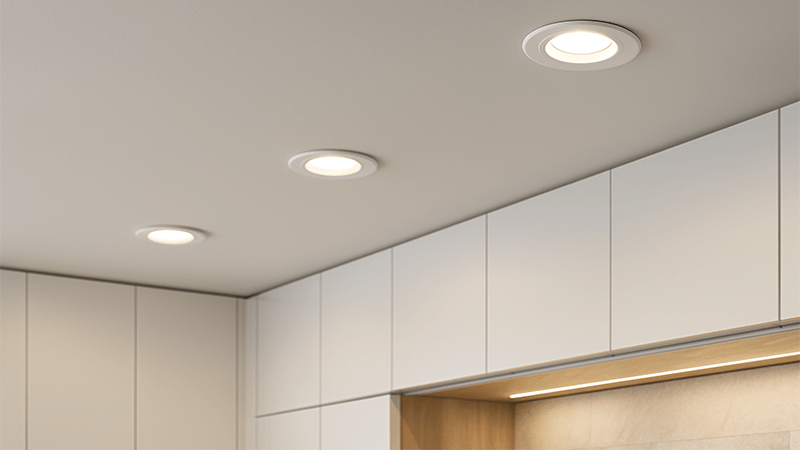
I've spoken with hundreds of purchasing managers over the years, many of them experts like Shaz from the UAE. A common point of confusion that always comes up is the specific application for different IP ratings. It seems straightforward, but a small mistake can lead to failed inspections, early product failure, or even safety hazards. The difference between IP44 and IP65, for example, is huge in terms of performance and cost.
That's why I want to help clear things up. Getting this right saves you money, protects your reputation, and ensures the project's long-term success. Let's dig into the details and see exactly where IP44 downlights fit and, just as importantly, where they don't.
Is IP44 suitable for kitchens?
Steam and daily cooking splashes can threaten your kitchen lighting. Are you afraid of fixtures failing early or causing a hazard? An IP44-rated downlight is designed for these kitchen conditions.
Yes, IP44 is highly suitable and often the standard requirement for kitchens. The rating ensures the fixture is protected against splashes of water from any direction, which is perfect for areas above sinks or counters. It also handles the steam and moisture common in a cooking environment.
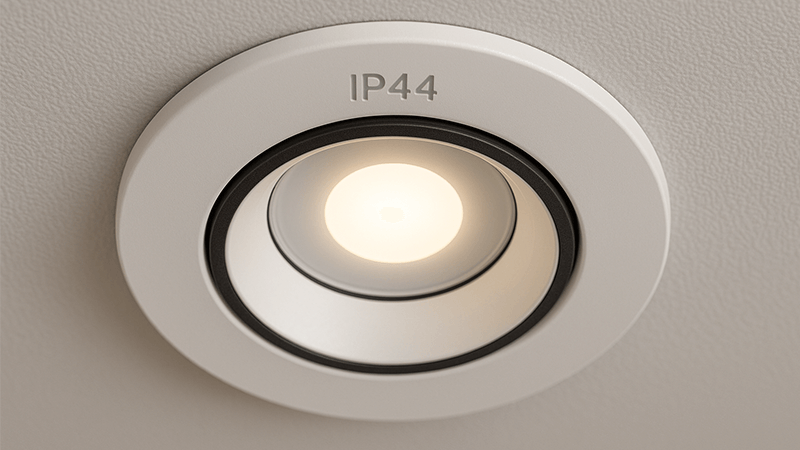
In my experience, the kitchen is one of the most common applications for IP441 downlights. I once worked with a contractor on a large residential complex. To save on the budget, his initial plan specified standard IP20 downlights throughout the entire apartment, including the kitchens2. I immediately saw this as a red flag. I explained to him that something as simple as steam from a boiling pot of pasta or an accidental splash while washing dishes could introduce moisture into an IP20 fixture. This could lead to a short circuit, premature failure, or even a fire hazard.
We discussed the practical risks. He realized that the small upfront saving was not worth the potential for costly callbacks3 and damage to his company's reputation. We amended the order to use IP44 downlights4 in all the kitchens2. A few months after the project was completed, he called me. He told me one of the apartment units had a minor plumbing leak5 from the faucet that sprayed water up toward the ceiling. The IP44 downlights were completely unaffected. He was so relieved he didn't have to deal with a mass recall. Making that smart upgrade was a simple, preventative measure that paid off. For a buyer, this is a perfect example of why specifying the correct rating is not just about following rules; it’s about ensuring real-world durability.
Here's a simple breakdown of why IP44 works so well in this setting.
| Feature | IP20 (Standard Indoor) | IP44 (Splash-proof) | Why It Matters in a Kitchen |
|---|---|---|---|
| Water Protection | None | Protects against splashes from any direction | This is crucial. It handles steam, condensation, and splashes from the sink. |
| Common Location | Living rooms, bedrooms, hallways | Above sinks, general kitchen ceiling areas | Use the right product for the right zone. |
| Safety Risk | High risk of short circuit from moisture | Low risk; designed specifically for dampness | Prevents electrical hazards6 in a wet area. |
Is IP44 suitable for heavy rain?
Your outdoor project needs reliable lighting, but heavy rain7 is a major threat. Are you worried that your specified fixtures will flood and fail? You need to know if IP44 is strong enough.
No, IP44 is absolutely not suitable for heavy rain. It is only rated to protect against light splashing. For any area directly exposed to rainfall, wind-driven rain, or water from a hose, you must use a fixture with a higher rating, like IP658, to ensure safety and functionality.
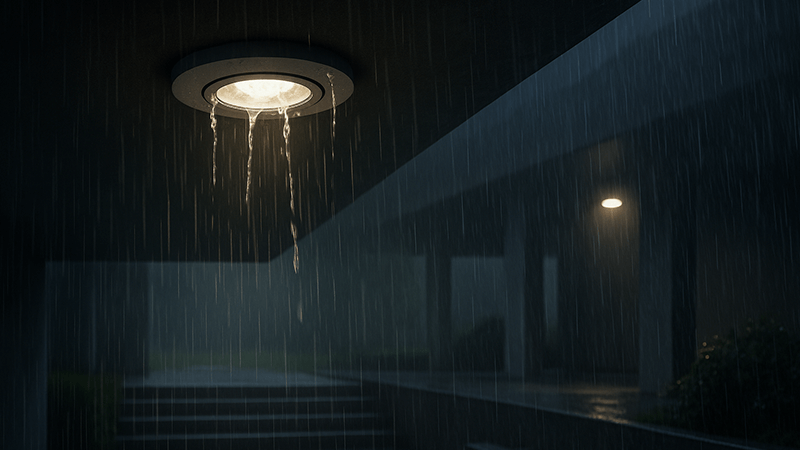
This is a critical distinction that can make or break a project. My most important insight is this: IP44 provides protection against moisture and fog, but it is not truly waterproof. For real waterproof performance, you need to start at IP65.
I remember a client planning a beautiful hotel project in Southeast Asia. He wanted to use our IP44 downlights for the exterior soffits under the roof eaves. His logic was that the roof provided cover, so they wouldn't get "wet." I had to have a very frank conversation with him. I asked, "What happens during your rainy season? The wind will drive that rain sideways, hitting those lights with real force." Wind-driven rain acts more like a low-pressure jet of water, not a gentle splash. An IP44 fixture is not built to withstand that.
He was focused on saving a few dollars per fixture. I laid out the true potential cost: dozens of failed lights, water getting into the ceiling cavities, and the high labor expense of replacing everything in a few months. Plus, the damage to the hotel's reputation from failing lights would be immense. We changed the specification to IP65 downlights. They have a dust-tight seal and can withstand water jets9 from any direction. It was the right decision. A year later, he told me they'd been through several major storms without a single failure. For a purchasing expert like Shaz, understanding this environmental factor is key to avoiding costly mistakes.
Let’s look at what the numbers really mean for water protection.
| IP Rating | Second Digit Meaning | Good For... | Bad For... |
|---|---|---|---|
| IPx4 | Splashing Water | Kitchens, Bathrooms (Zone 2), Covered Porches | Direct Rain, Gardens, Exposed areas |
| IPx5 | Water Jets | Exposed Outdoor Walls, Soffits in rainy climates | Immersion in water, Ponds |
| IPx6 | Powerful Water Jets | Ship Decks, Industrial Wash-down areas | Immersion in water, Fountains |
Is IP44 better than IP65?
You need the best downlight for your job, but higher numbers can be confusing. Are you overspending on IP65 protection when IP44 is all you need? Choosing correctly saves money.
No, one is not "better" than the other; they are designed for different jobs. IP65 provides far superior protection against dust and water jets, which is vital for outdoor and industrial use. IP44 is the correct and more cost-effective choice for indoor damp locations like bathrooms.
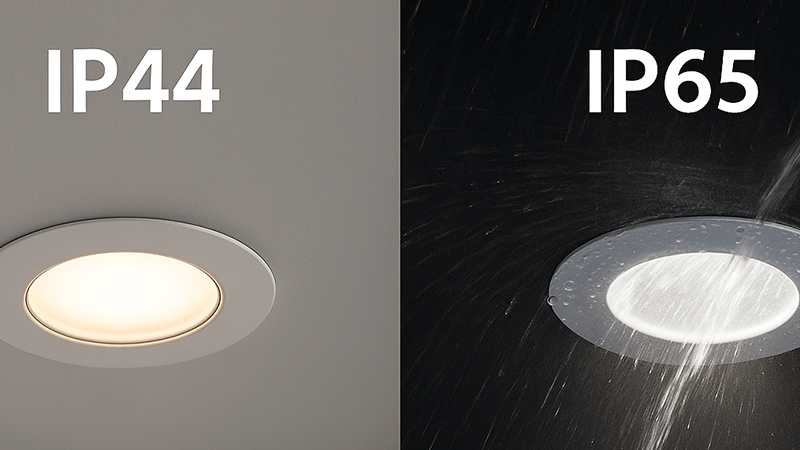
Thinking one IP rating is "better" than another is a common trap. You wouldn't use a giant sledgehammer to put a small nail in the wall. It’s about using the right tool for the job. An IP65 rating requires more engineering, tighter seals, and more robust gaskets to keep out dust and high-pressure water. All of that adds cost to the product. Using an IP65 fixture where it isn't needed is simply a waste of money.
I got an inquiry once from a great client, a purchasing manager named Shaz based in the UAE. He sent over the lighting schedule for a multi-story apartment building. I was surprised to see he had specified IP65 downlights for every single room—including all the bedrooms, living rooms, and hallways. I called him right away. I asked, "Shaz, why such a high rating for all the dry areas?" He admitted he thought a higher IP number meant higher overall quality in every aspect, from the LED chip to the driver.
I explained that the IP rating only relates to the enclosure's protection against solids and liquids. It doesn't define the quality of the light output or the electronics inside. More importantly, he was about to spend nearly 40% more than necessary on that part of the project. We worked together to revise the plan. We used IP65 in the shower areas (Zone 1), IP44 in the kitchens and main bathroom areas (Zone 210), and standard IP20 downlights everywhere else. The client was thrilled with the significant cost savings, and Shaz was able to reallocate that budget to a better control system. It's not about what's "better," it's about what is appropriate and smart.
| Aspect | IP44 Downlight | IP65 Downlight | The Takeaway for a Buyer |
|---|---|---|---|
| Best Use | Indoor damp areas (kitchens, bathrooms) | Outdoor, dusty, or wash-down areas | Match the product to the environment. |
| Protection | Splash-proof | Dust-tight, Water jet-proof | Don’t pay for protection you do not need. |
| Cost | More affordable | Higher cost | Using IP65 everywhere is a poor use of budget. |
| Simplicity | Standard installation | Requires care to ensure the seal is perfect | The right spec makes the installer's job easier. |
What is the IP44 requirement?
You need to meet building codes11, but the term "IP44" can be unclear. Worried that your lighting specifications will be rejected? Understanding the requirement is key to compliance and safety.
The IP44 requirement breaks down into two parts. The first '4' means the fixture is protected against solid objects larger than 1mm. The second '4' means it is protected against splashing water from any direction. This rating is the minimum standard for bathroom electrical Zone 2.
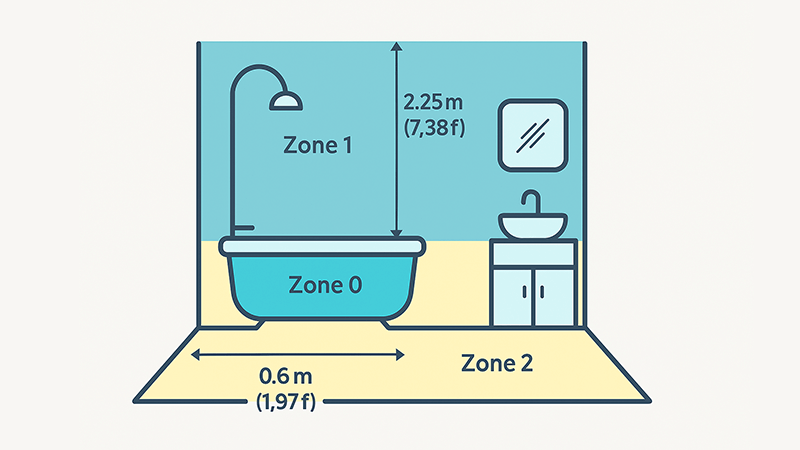
Let's break down what those numbers actually mean in practice. The first digit refers to protection against solids. A '4' rating means you cannot poke anything thicker than a 1mm wire into the fixture and touch a live part. This protects against accidental contact with tools or wires during installation12 and prevents larger insects from getting inside.
The second digit is for water protection, and it's the more important one for this rating. A '4' here means the light is splash-proof13. To get this certification, the product has to pass a specific test. It is placed in a chamber and subjected to an oscillating spray of water from all directions for at least 10 minutes. It must completely prevent water from reaching the electrical components. This test is designed to simulate the splashes you'd get from a shower or a sink.
I’ve seen how other companies handle this. I once visited a factory where the "IP44 test" was a worker sprinkling a little water from a bottle on top of the light. That proves nothing. At my iPHD facility, we have a calibrated IP testing chamber. We follow the official standards precisely. When you buy a product with an IP44 rating from us, you are buying the confidence that it has been properly engineered and rigorously tested. Otherwise, the rating is just letters on a box. This commitment to quality is what separates a reliable supplier.
For buyers, the most common place you'll see a specific IP44 requirement is in bathroom regulations.
Bathroom Zones Explained:
- Zone 0: Inside the bathtub or shower itself. Requires IP67 (can be immersed in water).
- Zone 1: The area directly above the bath or shower, up to 2.25m from the floor. Requires IP65 (can handle water jets from a shower head).
- Zone 2: The area extending 0.6m outside the perimeter of the bath or shower. This is the primary zone where IP44 is the required minimum standard.
- Outside Zones: Any area outside of zones 0, 1, and 2. There's technically no IP rating required here, but using IP44 throughout a large bathroom is good practice for general moisture protection14.
Conclusion
IP44 downlights are the go-to choice for indoor damp areas like kitchens and bathrooms. For direct rain or water jets, you must upgrade to IP65. Always match the rating to the job.
Understanding IP44 helps ensure you choose the right lighting for damp areas, preventing costly mistakes. ↩
Learn why IP44 is essential for kitchen safety and functionality. ↩
Explore how improper lighting specifications can lead to expensive project delays. ↩
Explore options for downlights that suit your specific needs in moisture-prone areas. ↩
Learn about the risks plumbing leaks pose to lighting and how to mitigate them. ↩
Learn about potential electrical hazards to ensure safety in moisture-prone locations. ↩
Find out which lighting fixtures can withstand harsh weather conditions. ↩
Understand the distinctions between these ratings to choose the right fixture for your needs. ↩
Learn how water jets affect lighting performance and safety in outdoor settings. ↩
Understand the specific requirements for lighting in Zone 2 to ensure safety. ↩
Ensure compliance with local regulations by understanding bathroom lighting codes. ↩
Discover installation tips to ensure safety and functionality of your lighting. ↩
Discover the importance of splash-proof ratings for safety in damp environments. ↩
Understand the significance of moisture protection to prevent electrical hazards. ↩

